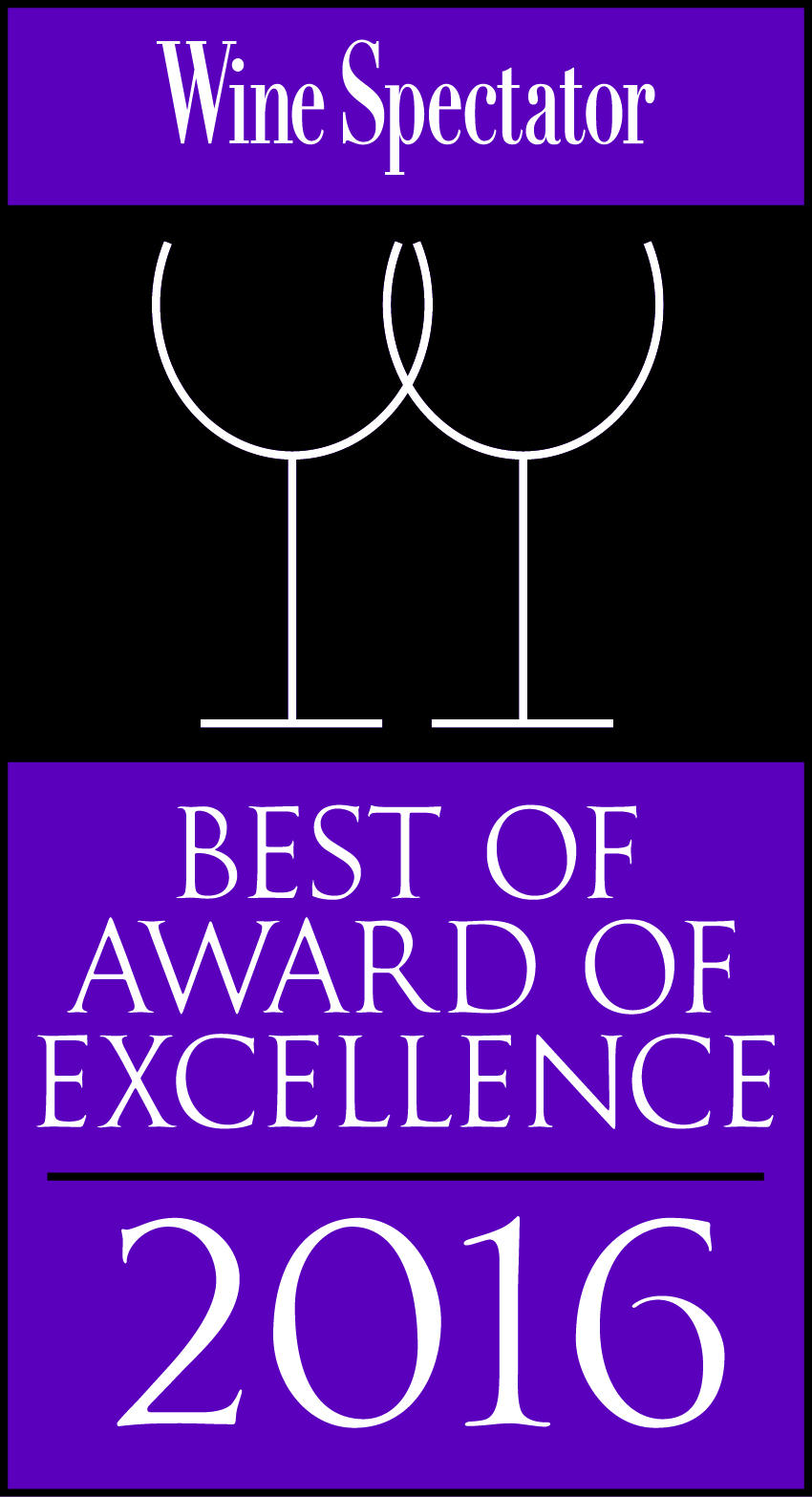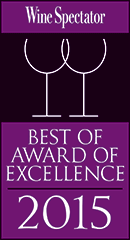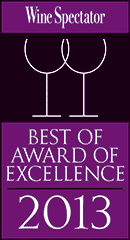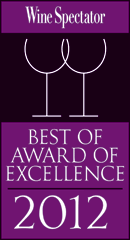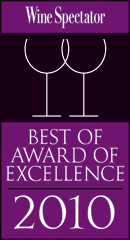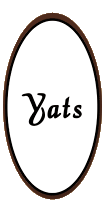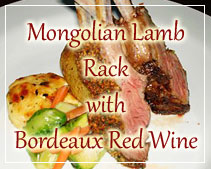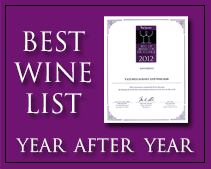Cabernet Franc the underrated wine grape
Cabernet Franc the underrated wine grape
Philippines wine supplier Manila wine shop discusses wine by the grape variety Cabernet Franc.
Date: October 11, 2010
New About Wine by Yats Restaurant & Wine Bar located in Pampanga Angeles City Clark Philippines
Some wine grapes command too much respect; others don’t command nearly enough. Take cabernet franc. It is the primary ingredient in what many regard as Bordeaux’s finest wine, Cheval Blanc, and is a 50-50 partner, with merlot, in two other Bordeaux grandees, Ausone and Lafleur. It produces interesting, distinctive wines in places besides Bordeaux; one of Napa Valley’s most coveted wines, the Dalla Valle Maya, is a roughly equal blend of cabernet franc and cabernet sauvignon. But the sun never seems to shine on cabernet franc—consumers shun it; the critics barely acknowledge it. The injustice must end.
Me, I’ve always had a soft spot for cabernet franc. I like the grape mainly for its olfactive charm, which is considerable. Along with the usual cherry-and-berry aromas, cabernet franc normally sends up a seductive whiff of herbs, spices, and violets. I get particularly weak-kneed about its sweet tobacco scent (perhaps because my childhood was spent in a cloud of cigar smoke). But the gratification isn’t confined to the nose; in cooler climates, at least, cabernet franc yields pleasingly crisp, somewhat rustic wines that stand in welcome contrast to your garden-variety fruit bombs.
Cabernet franc is not, of course, a noble grape, a la cabernet sauvignon (although it did, with the otherwise undistinguished sauvignon blanc, help sire the latter). On its own, cabernet franc lacks the structure and heft to produce candidates for immortality. Even Cheval Blanc includes a big dollop of merlot, and in the 2001 vintage, merlot actually took over the pilot’s seat. On the left bank of Bordeaux, where the likes of Latour, Margaux, and Haut-Brion reign, cabernet franc is the third grape, after cabernet sauvignon (the backbone of the Medoc wines) and merlot; a small amount is added to the mix for aromatic purposes and to help make the wines a little less stern than they would otherwise be.
Along with merlot and chardonnay, cabernet franc put in a cameo in the movie Sideways, and it, too, was disparaged by Miles, the main character, played by Paul Giamatti. But unlike merlot and chardonnay, cabernet franc got the last laugh: Late in the film, Miles, in a fit of despondency, sucks down his prized bottle of 1961 Cheval Blanc at a local burger joint, evidently having forgotten that he doesn’t like cabernet franc. Of course, if any wine could change his opinion of the grape, it would be Cheval Blanc—or Ausone or Lafleur. Unfortunately, these are not the cheapest advertisements: All three wines fetch $125-$300 per bottle in less exalted vintages, $400 and up in stellar ones.
Fortunately, cabernet franc fares reasonably well in other locations and can produce good wines that sell for a fraction of the cost. It is the signature red-wine grape in France’s Loire Valley, where the cabernet francs are typically purebreds. Loire reds have long been a staple of bistros and wine bars in France but have never won much of a following in the United States. This is partly a matter of taste: people accustomed to plusher California wines often find them too austere. Critics haven’t helped matters: The Loire has often been dismissed as a backwater for reds, and names like Chinon, Bourgueil, and Saumur-Champigny (the three principal appellations for cabernet franc in the Loire) have become, in the minds of many American consumers, synonymous with words like thin and weedy.
In truth, a lot of cabernet francs from the Loire are thin and weedy. Partly, that’s a function of incompetent winemaking; usually, though, it’s been a result of the weather. The Loire is located so far north that full ripeness has traditionally been an elusive quality in the grapes. And unripe cabernet franc tends to smell and taste, well, thin and weedy. However, there is also some terrific stuff that comes out of the Loire. Charles Joguet’s Chinons are among the earthiest and most sensual wines on the market and have long been a personal favorite of mine. When the weather cooperates, the wines of Bernard Baudry, Catherine and Pierre Breton, and Olga Raffault are also reliably good.
And as it happens, the weather in the Loire seems to be getting more agreeable. Kermit Lynch, who has been importing Joguet into the United States for 30 years, recalls that during his first decade representing Joguet, there was one outstanding red-wine vintage, four reasonably good ones, and five difficult years (cool weather, lots of rain). But between 1995 and 2004, there wasn’t a dog to be found; by Lynch’s reckoning, the decade featured seven excellent red wine vintages and three good ones. He says better viticulture is one reason for the region’s improved batting average, but a bigger factor is more consistently dry and warm weather, a development he puts down to global warming. According to Lynch, the weather in the Loire has turned so favorable that one winemaker recently requested permission from the local authorities to begin cultivating Syrah, a grape heretofore seen in the Loire only in liquid form and under a cork.
Although cabernet franc is largely vinifera non grata among consumers, it is capable of inspiring a certain quixotism among winemakers. In Tuscany, Andrea Franchetti of Tenuta di Trinoro has staked his reputation on cabernet franc, a gamble that appears to be paying off: His flagship wine, called Tenuta di Trinoro, which contains about 80 percent cabernet franc, has won the praise of Robert Parker and has even been labeled “Cheval Blanc in the sun.” Likewise, one Long Island winery, Schneider Vineyards, has made cabernet franc the focal point of its portfolio. Ditto Napa’s Lang & Reed, which seeks to make wines in the lighter style of the Loire, no small challenge given the Valley’s un-Loire-like weather (getting the grapes to ripen isn’t a problem; keeping them from roasting is). Several well-known California estates, including Pride Mountain, La Jota, Robert Sinskey, and Rubicon Estate, produce wines that are composed entirely or principally of cabernet franc, and all four wines present the grape in a slightly different light.
Despite its inherent limitations, cabernet franc is impressively versatile. Canada’s premier winery, Inniskillin, is even using it to produce one of its vaunted ice wines. Although I didn’t much care for the wine, I had to marvel at cabernet franc’s ability to show the world so many faces. That’s the difference between an interesting grape and a dullard.
Source: http://www.slate.com/id/2141862/
Are these articles useful for enhancing your wine and dine experience in the Philippines. Do they also help you with travel, leisure, vacation, dining out, nightlife and other leisure activities plans in Philippines? Considered one of the best restaurants in Manila, Yats hopes to provide you with pertinent information to plan your trips to Pampanga Angeles City Clark Freeport Zone whether you are travelling from Manila or other Asian countries such as Hong Kong, Shanghai, Singapore, Malaysia or Korea.
Restaurant reservations in Philippines, planning of menu, selection of wine for dinner and booking a private function and event in Angeles City Clark Freeport Zone can all be handled. Yats Restaurant and Wine Bar has been regarded by many to be the premier restaurant north of Manila Philippines. Its 3000-line award-winning restaurant wine list has kept many wine lovers happy dining in this restaurant in Angeles City Clark Philippines for over a decade.
Yats Restaurant and Wine Bar was built by Hong Kong-based Yats International in 2000 to provide a world-class fine dining restaurant, business meeting facilities and venues for private dinners and functions in Pampanga Angeles City Clark Freeport Zone. Pampanga Angeles City Clark Philippines was selected for this restaurant because of safety, clean air, absence of traffic and proximity to Manila and Subic.
For comments, inquiries and reservations, email Restaurant@Yats-International.com or call these numbers:
(045) 599-5600 0922-870-5178 0917-520-4401 ask for Ernest or Pedro.
Http://www.YatsRestaurant.com
Getting to this fine dining restaurant of Angeles City Clark Freeport Zone Pampanga Philippines
How to get to this fine-dining restaurant in Clark Philippines? Once you get to Clark Freeport, go straight until you hit Mimosa. After you enter Mimosa, stay on the left on Mimosa Drive, go past the Holiday Inn and Yats Restaurant (green top, independent 1-storey structure) is on your left. Just past the Yats Restaurant is the London Pub.
Pampanga is fast gaining the respect of food and wine lovers from Manila and tourists from all over Asia as a holiday destination that has good restaurants. Manila residents spending holidays in Clark often wine and dine at some of the best restaurants in Pampanga. Within Angeles City, there is one restaurant in Clark that is lauded by food and wine lovers as one of the best restaurants outside Manila to enjoy good wine and good food. This is also one of the good restaurants in Pampanga that is very child friendly also. Visitors to Clark Philippines rarely pass up in the opportunity to dine at one of the best restaurants in Pampanga.
